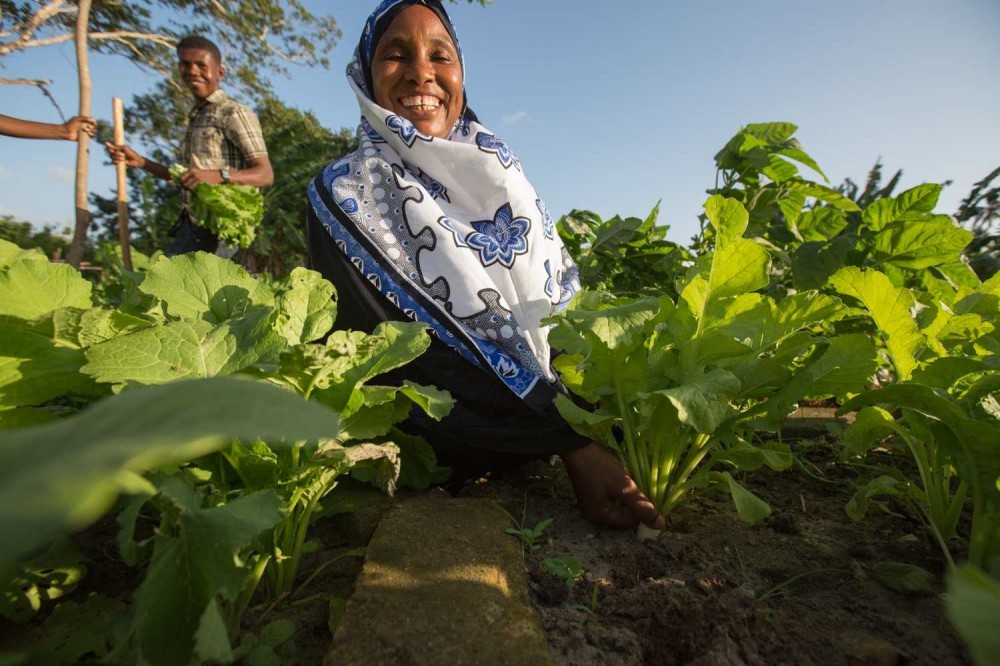Eight years ago, when my friends and I (Daimen Hardie) started an international development organisation, we were by all accounts completely unqualified. We were in our early twenties and had little or no formal training or experience.
Most of us were tree-planting as a way of paying for university when one of our fellow planters, Jeff Schnurr, came back from a trip to a tiny tropical island named Pemba, just off the coast of Tanzania.
He regaled us with tales of how he’d met Mbarouk Omar, the man who now heads up our local sister NGO, and had sketched out with him a dream to restore the island’s lost forests. He now wanted to know: would we go out there and help?
Fast-forward eight years and our NGO, Community Forests International, has helped to plant more than 1.5 million trees across Pemba.
Our movement has also blossomed from rural farmers managing low-tech nurseries into community-scale solar microgrids and regenerative agriculture. Pemba is becoming a place to watch for lessons in frontline climate change adaptation.
And in the grand scheme of things, we’ve had next to nothing to do with it.
Community Forests Pemba (CFP), the local NGO we partner with, is made up almost entirely of Tanzanians with decades of research and administrative experience as well as an intimate understanding of local challenges. They even taught us how to run our own organisation back in Canada, guiding us on issues such as good governance and building partnerships, and encouraging us to replicate the model we used in Pemba in other places.
Back in 2012, CFP began working with the Kokota community to develop agroforestry systems on their neighboring island of Funzi. When CFP first began working with Kokota, they relied almost exclusively on fishing as their sole source of income.
However, with the assistance of CFP’s Agroforestry Officer, Ali Hamad Ali, this community was able to transform Funzi from a scrubland into a source of nutrition and income.
Over the past three years, these farmers have planted fruit and timber in conjunction with annual crops, like cassava and bananas. Now, they are able to grow more bananas and cassava than they can eat, and they are able to sell their surplus to neighboring fishing villages.
My motivations for this work change over time. When we started out it was simple – we wanted to help our friends in Tanzania and we wanted an opportunity to pursue work we believed in. Those things are still really important, but now I feel a larger sense of responsibility also. We created our own vehicle for change and it’s working. Now I think the challenge is to share our approach as widely as possible – because that will allow the positive change to scale up beyond the limits of own organization.
From here I see us serving as a platform for others and helping other people to build their own movements or to realize their own ideas and dreams. This is the idea behind our fledgling Rural Innovation Campuses – one on Pemba island, Tanzania and one in rural New Brunswick, Canada. We’re creating safe spaces to help people bring their ideas into reality and also to share regenerative solutions with peers.
In terms of regenerative land-use, one of the questions that we’ve been asking lately is: can we have our conservation and eat it too? This has led to some really exciting new approaches to growing food and restoring the environment, and one uniquely Pemban solution that is emerging has been coined the “Spice Forest“.
The overall aim is to convert deforested land into diverse food systems made up mainly of trees, in the hopes of creating “agroecosystems” that are as low-input, as high-yielding, and as resilient to the negative impacts of climate change as natural forests. In practice this means that Tanzanian farmers working for improved agricultural yields and income will simultaneously be helping to return critical ecosystem functions to degraded landscapes. We’re in the earliest stages of piloting this idea – but so far the results have been really encouraging.
^^^^^^^^^^^^^^^^^^^
Note from Storm: This article derives from emails that Daimen Hardie sent to me, plus some material extracted from the Guardian article and websites linked to below. Thanks for your wonderful work, Daimen, and congratulations to the regenerative citizens of Pemba: the world has much to learn from you!
See Community Forests International website.
See Community Forests Pemba website & photo credits.
See Pemba initiative on the Permaculture Research Institute website.


